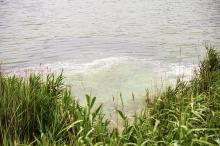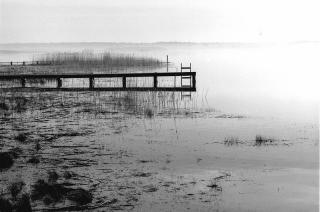
Chilmark Pond
2014
Two leading scientists with the Massachusetts Estuaries Project met with the Chilmark selectmen this week to seek approval in moving forward with their study of Chilmark Pond. A draft report released last month confirms that the pond is at its limit for handling nitrogen runoff.
We all have a pond we favor on Martha’s Vineyard — so many ponds, separated or not from the salty sea water that surrounds this place, seven miles out from the mainland. The map of the Island, displayed on a board outside the Vineyard Haven Steamship Authority building, looks like a moth-eaten triangle whose lacy holes tell the story of many ponds, large and small.
The saltwater pond is generally healthy with no serious habitat damage, but nitrogen levels are at their limit, the report from the Massachusetts Estuaries Project report said.
With nitrogen pollution a perpetual concern for Vineyard waterways, two towns are hoping that a shellfish experiment will be the latest puzzle piece to fall into place.
Voters in Chilmark and Tisbury will be asked at their respective town meetings next week to fund pilot programs aimed at reducing nitrogen levels in two locations: Chilmark Pond and Lagoon Pond. Through the funding and a partnership with the Martha’s Vineyard Shellfish Group, test reefs of noncommercial oysters will be cultivated, in addition to beds of native ribbed mussels.






